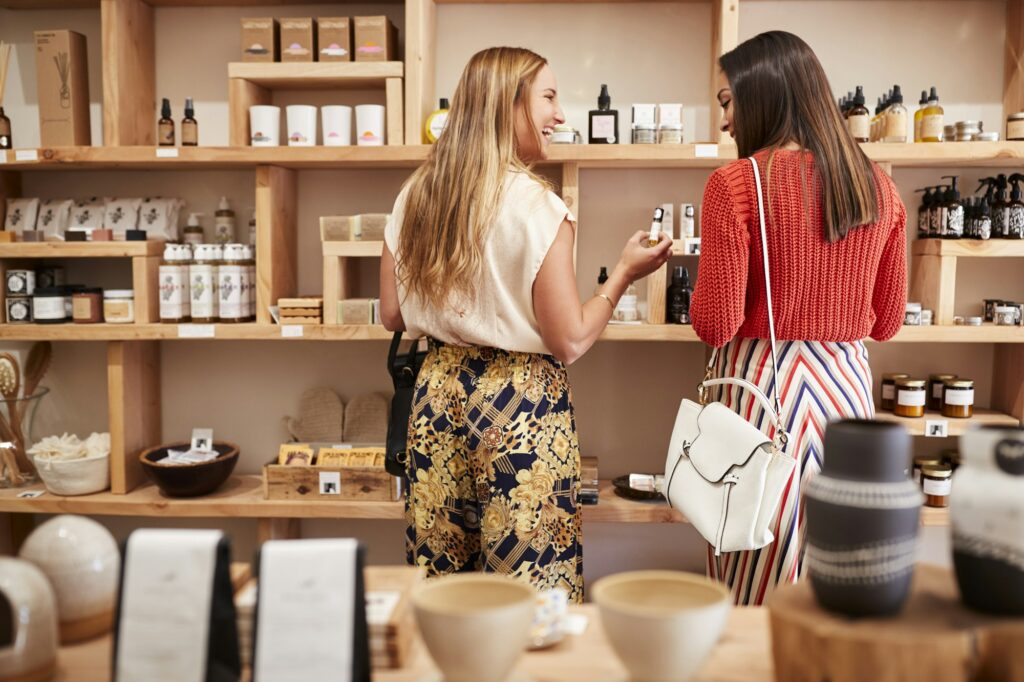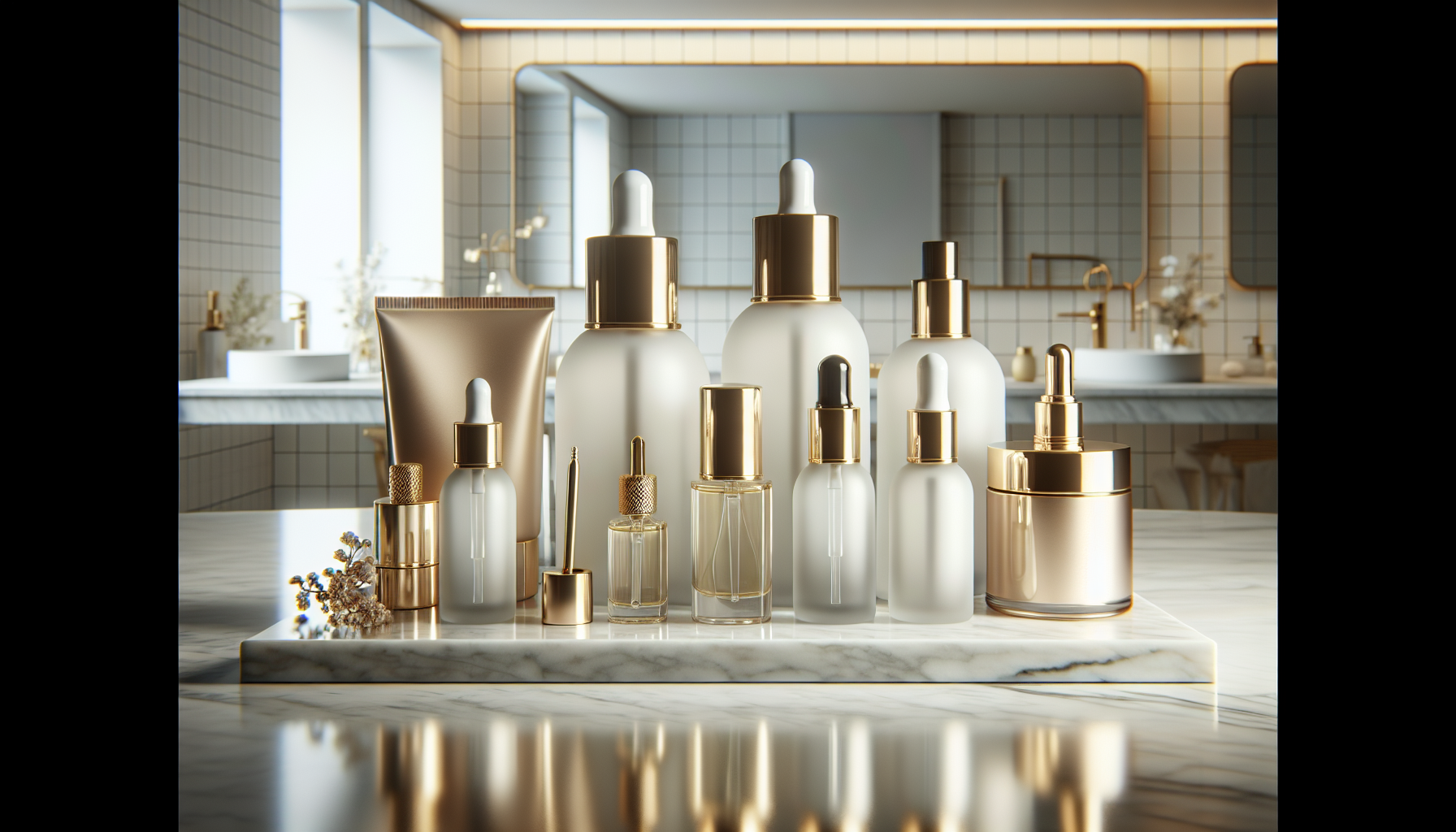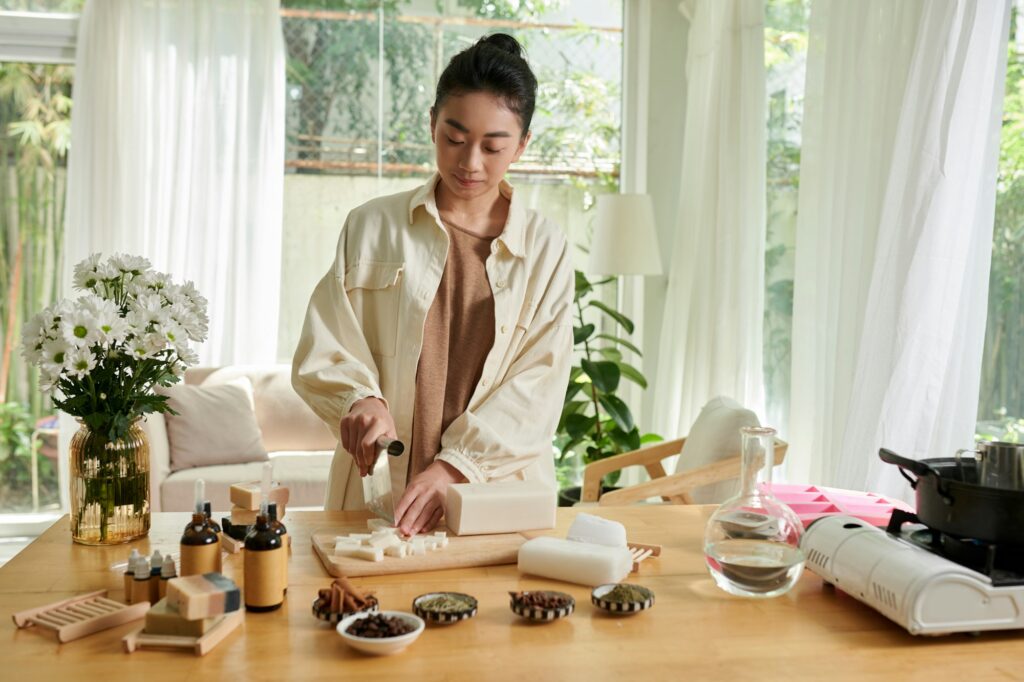Finding the right cosmetic packaging material can significantly influence your product’s success and sustainability.
Whether aiming for shelf appeal or eco-consciousness, selecting the perfect material matters.
This article gives you a straightforward rundown on the materials that balance practicality with purpose – glass, recycled plastics, and innovative biodegradables – and how they hold up to beauty industry standards.
Navigate through your options clearly and confidently, with insights that matter to your brand’s values and bottom line.
Key Takeaways
Sustainable materials like glass, recycled plastics, and biodegradable options are reshaping cosmetic packaging, driven by environmental concerns and consumer demand for eco-friendly products.
Innovative designs, including unique shapes, customized printing, and functional features, play a significant role in brand differentiation and enhancing the customer experience in the beauty industry.
Quality cosmetic packaging enhances product shelf life by offering protection against external elements and contamination, with innovations such as airless pump bottles, UV-resistant materials, and leakproof containers.
Sustainable Cosmetic Packaging Materials

As we tread more consciously towards a sustainable future, the beauty industry is not far behind.
Implementing sustainable cosmetic packaging materials has become a cornerstone for brands aiming to reduce their environmental impact while catering to the eco-conscious consumer.
Embracing a range of materials, from glass containers and recycled plastics to biodegradable options, the cosmetic packaging landscape is transforming, all while preserving natural resources, minimizing waste, and reducing carbon footprints.
Glass Containers
Adored for their chic aesthetics and environmental credentials, glass cosmetic jars have carved a niche in sustainable cosmetic packaging.
With a 100% recyclability rate and endless reusability without degradation in quality, glass containers are a green choice for any beauty brand.
Besides their environmental advantages, the effectiveness of glass containers as a barrier against UV rays depends on the color of the glass.
Amber glass, in particular, is known for its ability to filter out harmful UV light, thereby maintaining the integrity of the product inside, from lotions and creams to essential oils and bath salts.

Additionally, some glass containers undergo surface treatments such as painting or coating, which can further enhance their ability to block UV rays and protect the contents within.
However, the fragility of glass containers and their higher production cost compared to plastic containers pose challenges, particularly in the ship and transportation of these products.
Recycled Plastics
Not all plastic is created equal, and recycled plastic is rewriting the narrative. Utilizing post-consumer recycled materials, companies are developing environmentally friendly packaging solutions that reduce the demand for virgin plastic production and lower the overall environmental impact. The process involves shredding, washing, and separating plastics by polymer types, resulting in a material that meets the durability and quality standards required for cosmetic packaging.
Common types of recycled plastic include Polyethylene (PE), Polypropylene (PP), Polyethylene Terephthalate (PET), and more, all efficiently processed for reuse.
Biodegradable Options
Biodegradable materials, such as bamboo and plant-based plastics, are emerging as viable alternatives to traditional plastic packaging. They provide an eco-friendly option that conserves natural resources and decomposes over time without causing lasting harm. However, the transition to biodegradable materials is not without challenges. Factors such as visual appeal, strength, recycling complications, and proper disposal requirements pose potential hurdles.
Nevertheless, the environmental benefits and consumer demand for greener options make biodegradable packaging a trend that’s here to stay.
Innovative Cosmetic Packaging Designs

In the crowded beauty market, standing out is key. Innovative cosmetic packaging designs can turn heads and capture hearts by offering unique shapes and sizes, customized printing and labeling, and functional features. They serve as a means for brand messaging, differentiating the product in the market and elevating its perceived value.
After all, a product’s packaging is often the first interaction customers have with the brand, and first impressions matter.
Unique Shapes and Sizes
Unusual shapes and sizes in cosmetic packaging can generate a feeling of originality and anticipation, drawing in consumers. From pen-shaped lipstick containers to hexagon-shaped packaging, these design elements differentiate the product on the shelf and have the potential to elevate the perceived worth of the product through their visual allure. Materials such as glass, paper, cardboard, and plastic are frequently employed to produce these distinctive designs, creating an appealing line of cosmetic packaging that stands out from the stock options.
With the current trend of refillable formats, embossing and debossing techniques, the wide selection of possibilities are endless.
Customized Printing and Labeling
Creating a distinct and memorable appearance is paramount in establishing a cohesive brand identity. Customized printing and labeling play a crucial role in this endeavor. From offset printing and gravure printing to embossing and silk screen printing, a range of techniques can be utilized to highlight the brand’s logo, colors, and design components.
Labeling also enhances brand recognition by incorporating a memorable logo, strategic use of colors, and unique packaging design.
Functional Features
In addition to aesthetics, functionality is a key consideration in innovative cosmetic packaging. Functional features, such as easy opening and closing mechanisms, spill-proof designs, and built-in applicators, ensure ease of handling and utilization. This not only enhances the user experience but also adds value through improved product effectiveness and multi-functional use.
Enhancing Product Shelf Life with Quality Packaging

Quality in cosmetic packaging is paramount in preserving a product’s integrity and extending its shelf life. By acting as a protective barrier against external elements like moisture, air, and sunlight, quality packaging can also prevent contamination and safeguard the product against degradation.
Let’s delve deeper into the role of airless pump bottles, UV-resistant materials, and leakproof containers in enhancing product shelf life.
Airless Pump Bottles
Airless pump bottles are leading the way in preserving product quality. By using a vacuum seal mechanism that restricts air ingress, these bottles offer several benefits:
Prevent contamination
Extend shelf life
Allow for precise dispensing They are especially beneficial for skincare products that require precise application and minimal wastage, such as serums, face oils, and essences.
UV-Resistant Materials
UV-resistant materials play a crucial role in maintaining the quality of cosmetic products. By obstructing or reflecting UV light, these materials prevent UV-induced degradation and oxidation of ingredients, thereby preserving their efficacy and stability over time. While UV-resistant packaging offers benefits such as water resistance and protection against scrapes and scuffs, it’s important to note that some plastic containers may offer insufficient protection against light and oxygen, potentially leading to degradation of product quality.
Leakproof Containers
A common concern for both brands and consumers is product spillage. Leakproof containers come as a savior, preventing product wastage and maintaining product integrity during transportation and storage. These containers, typically made from durable materials like High-Density Polyethylene (HDPE), ensure that the product remains secure and uncontaminated, regardless of where it’s taken.
Cosmetic Packaging for Skincare and Fragrance Products

Choosing the right cosmetic packaging is just as important as formulating the product it contains. Certain types of packaging, such as dropper bottles, rollerball containers, and spray bottles, are specifically suited for skincare and fragrance products, enhancing their application and user experience.
Dropper Bottles
Dropper bottles are a popular choice for skincare serums, oils, and other liquid products. They ensure precise measurement and application of each drop, minimizing waste and ensuring the correct dosage. These bottles are typically made from rigid, impact-resistant glass or plastic that is non-squeezable, further ensuring the effectiveness of the dispensing mechanism.
Rollerball Containers
Rollerball containers are highly convenient for applying fragrances and essential oils. They offer:
Precise application to pulse points
Mess-free and immersive fragrance experience
Preservation of fragrance integrity
Elevated aesthetic appeal, as they are crafted from glass.
Spray Bottles
For products that require an even distribution, such as toners, setting sprays, and fragrances, spray bottles are an ideal choice. They atomize the liquid into fine droplets that are evenly sprayed onto the desired area, ensuring a uniform application and enhancing the product’s performance.
Custom Packaging Solutions for Small Businesses

Emerging beauty brands and small businesses need not be left behind in the world of custom packaging. With solutions such as low MOQs and private label options, even the smallest of businesses can offer a unique and personalized touch to their products, all while managing their resources efficiently.
Low MOQs
Minimum Order Quantity (MOQ) is a term often feared by small businesses due to the large upfront investment it typically requires. However, with the availability of low MOQs, small businesses can now:
Order customized cosmetic packaging without committing to large quantities
Reduce upfront investment
Facilitate product customization
Scale their business
Manage their budget efficiently
This opens up opportunities for small businesses to thrive in the cosmetics industry by offering a variety of supplies.
Private Label Options
Creating a brand identity is crucial for any business, and private label options allow small businesses to create their own branded cosmetic packaging. This process involves collaborating with a company that manufactures the products under the business’s brand name, providing customers with a seamless experience while allowing the business to focus on branding, marketing, and selling the products.
While the costs of private labeling can vary, the benefits of flexibility, customization options, and a cost-effective approach to entering the cosmetic market make it an excellent option for small businesses.
Cosmetic Packaging Regulations and Compliance
Compliance with cosmetic packaging regulations is more than just a legal obligation. It’s a commitment to ensuring consumer safety, fostering transparency, and providing high-quality products. From understanding FDA regulations and EU cosmetic packaging guidelines to keeping abreast with sustainable packaging regulations, compliance can offer a competitive edge in specific markets.
FDA Regulations
FDA regulations play a crucial role in the cosmetic packaging landscape. These regulations encompass ingredient declarations, net quantity of contents statement, and the inclusion of the manufacturer’s name and address on the packaging. Brands should also be mindful of periodic updates to these regulations to ensure continued compliance and consumer safety.
EU Cosmetic Packaging Guidelines
For beauty brands seeking a global reach, understanding and complying with the EU Cosmetic Packaging Guidelines is crucial. These guidelines ensure consumer safety within the European Union (EU) market and can influence international trade by establishing a unified set of packaging requirements across various markets.
Sustainable Packaging Regulations
In the era of sustainable packaging, staying updated on relevant regulations is paramount. These regulations aim to minimize packaging waste and encourage efficient recycling, thereby reducing environmental impact. Adherence to sustainable packaging regulations not only aligns with consumer expectations for eco-friendly products but also contributes to a safer and more transparent industry.
Summary
In the dynamic world of beauty, packaging is more than just a protective shell. It’s an ambassador of the brand’s ethos, a reflection of its commitment to quality and sustainability, and a key player in enhancing user experience. From sustainable materials and innovative designs to quality packaging that extends product shelf life, every aspect plays a crucial role. As we navigate through regulations and explore custom solutions, it becomes clear that cosmetic packaging is a realm where beauty, innovation, and responsibility converge. So, as you embark on your next beauty shopping spree or design your product line, remember, it’s not just about what’s inside the package, but the package itself.
Frequently Asked Questions
What is the best paper for cosmetic packaging?
The best paper for cosmetic packaging, especially for luxury packaging like rigid set up boxes and cosmetic boxes, would be black specialty paper, metallic paper, and soft touch paper. These are the most popular choices (Date).
What are the benefits of using sustainable materials for cosmetic packaging?
Using sustainable materials for cosmetic packaging helps conserve natural resources, minimizes waste, reduces the carbon footprint, and provides eco-friendly options for customers. This is important for the environment and consumer preferences.
How do unique shapes and sizes in cosmetic packaging impact customer attraction?
Unique shapes and sizes in cosmetic packaging can generate a feeling of originality and anticipation, drawing in consumers and functioning as a means for brand messaging. This can have a significant impact on customer attraction.
What are some of the custom packaging solutions available for small businesses?
Small businesses can consider custom packaging solutions like low MOQs and private label options to add a unique touch to their products while managing resources efficiently.
What are some of the FDA regulations that beauty brands should be mindful of regarding cosmetic packaging?
Beauty brands should be mindful of FDA regulations requiring cosmetic ingredient declarations, the net quantity of contents statement, and the manufacturer’s name and address on the packaging to ensure compliance. These regulations help protect consumer safety and ensure transparency in product labeling.

